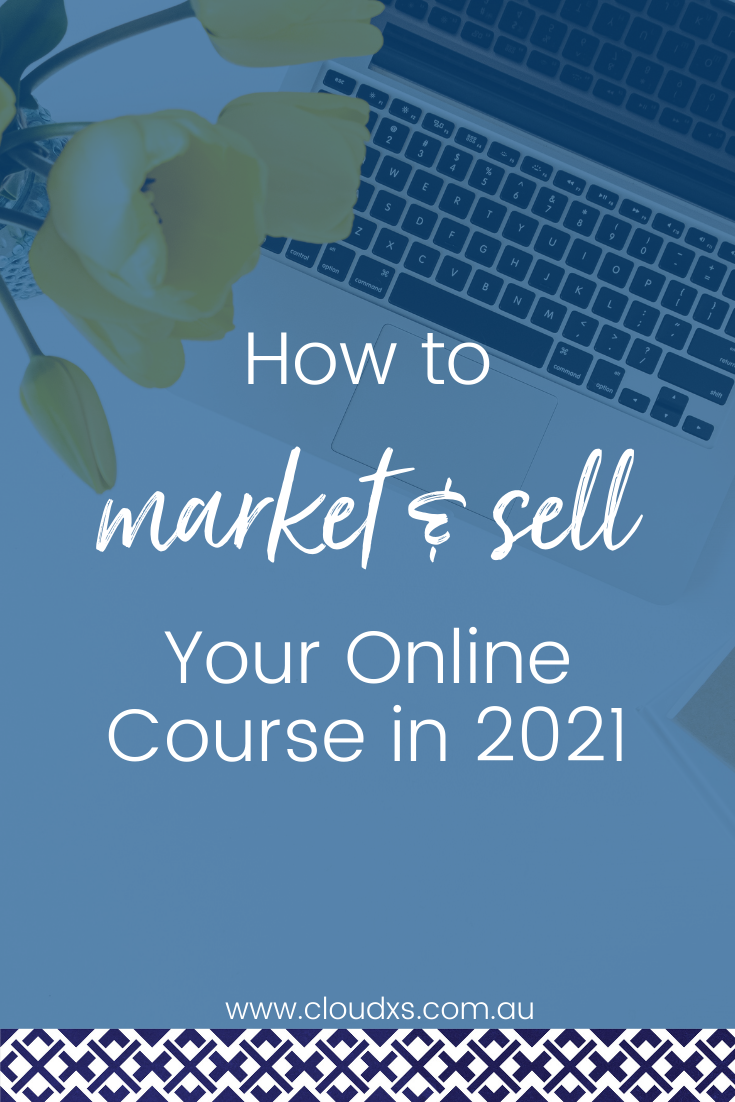
How to market & sell your online course in 2021
Here’s a foolproof marketing strategy to help boost your online course sales
There’s nothing more exciting than your online course launch day. I think our team gets just as excited as our clients do!
Your content is created, the platform has been built and branded, it looks amazing, it’s all been tested, and the gremlins have been banished. You’re ready to rock this world.
Awesome work!
But there’s one vital element some people don’t think about. And that’s marketing.
You’ve created a brilliant course. But if no one knows about it, it’ll end up like the shy girl at a dance – looking beautiful and ready to rock and roll, but if she’s hiding in the shadows, she’ll go unnoticed and miss out on the dance.
Don’t be that girl at the online course party!
The best way to market your online course is by using a funnel (IMHO)
Sales funnels work on marketing online courses. And it’s easier than you think. Trust me when I tell you that everyone can build a funnel.
Yes, you can pay for a proper funnel structure to be made like ClickFunnels, a program we love to use here (or use it yourself if you have the skills). But, you can also build a basic funnel yourself – guaranteed!
There are 2 types of funnels:
- Purchase funnel: Simple steps a customer takes to purchase a product
- Marketing funnel: The process of working out the mechanism and steps to sell your products or service (the customer journey)
Here’s how funnels work in person and online:
| Retail Store Funnel | eCommerce Funnel |
|---|---|
| Customer walks into the store | Customer visits the eCommerce website |
| Customer looks at products | Customer views a product page(s) |
| Customer grabs the item and puts it in her cart | Customer adds the item to her cart |
| Customer walks to the checkout | Customer enters the checkout process |
| Customer completes the purchase with the store clerk | Customer finishes checkout process and clicks' Purchase' |
The 8 steps to building a marketing funnel for your online course
1. Build a landing page
All online courses must have a landing (or sales) page. This is where you showcase your course and explain what it’s about, what your customer will get, and entice them to sign up. Make sure you include:
- An eye-catching, on-brand banner image
- A headline to capture the attention of your ideal audience
- A 100-200 word description of the course and address their pain points
- A call to action and checkout button(s)
- An about you section
- An overview of the course and learning outcomes (the transformation your student will experience)
- Offer stack with any bonuses they’ll receive
- Testimonials or social proof
- SEO keywords
2. Link the landing page to your website
Use your existing website as leverage to point your readers to your landing page. You can feature your course on the website and then use buttons that say ‘learn more’ that link through to your course landing page.
If you have a ‘school’ and multiple courses, you can add a school link to your website’s menu options. Or if you have a dedicated page for training and courses, you can give an outline and link to the course landing pages (A great feature in Thinkific is you can also embed a course widget on your website).
Alternatively, if you have enough information about your courses on your website, you can link the ‘purchase now’ button straight to your shopping cart (only do this if you think you’ve given people enough information to buy upfront on your website).
3. Market your course to the world
In the words of Frank Sinatra, ‘Start spreading the news’. Now you’ve got your landing page created and published, share it via social posts, email newsletters and blogs.
If you find one post isn’t getting attention, try changing the wording. Be persistent and keep trialling words and images until you find one that works. You can consider paying for things like Facebook Ads too (depending on your budget).
In blogs, you can write about your authority on a topic, and then drop a link to your landing page. For example, we’re online course builders who know a thing or two about course marketing (wink, wink).
4. Use your email list
Think about targeted campaigns to the people on your database. If they’ve previously signed up for a sampler of what your course is all about, they are the perfect audience to promote your course too. Send them targeted emails that link to your landing page or checkout button.
If you’re sending general emails to the entire database, make your new course a standout feature with an introduction to your ‘new and exciting’ online course.
5. Special offers & discounts
Offers and discounts always work! Especially if your audience has been following teasers about your upcoming course or has shown interest in similar products in the past. Entice them in using special discounts or loyalty bonuses.
6. Think visual
Some people hate reading and won’t make it through your sales page. You can try the following:
- Create a free webinar that addresses one of the issues your course provides, then drop in a discounted offer at the end as a way of capturing them.
- Produce live videos (i.e. social media) that explain what your course is about, the main objectives and how your course solves issues they are facing.
- Interview others on the topic related to your course and have some guest videos as an enticer.
7. Get testimonials
For brand new courses, you may not have testimonials at the start, but make sure you get into the habit of asking for these from students. To start, you can use testimonials from people you’ve previously worked with or sold products too, to show you’re an authority on the subject matter.
8. Map out your funnel
You want to be 100% clear on how your funnel works. You’ll need to know the type of content to create to market your course across each platform, and what your conversation path looks like.
Here’s a fantastic graphic that shows content for each of the marketing funnel stages:

Thinkific is a standout online course platform that helps with marketing
It’s no secret that we love the Thinkific platform and recommend it to all our clients. For marketing, it allows you to have:
- Direct links in your course admin to post straight to social media
- Widgets embedded in your WordPress site to display the course (or a widget button)
- Customised URLs, and you can even create links with discount coupons applied
- A QR code that goes to your landing page or checkout
SEO advantages as you can enter your title, description and keywords on your home or landing page, sign in page, collections page and any of your custom pages
Our team loves building online courses
At CloudXS Digital, we love helping you bring your online courses to life. You already have the content, so let’s show you how to transform it into a money-making, online course.
If you’d like help building your online course (that looks gorgeous, keeps in line with your brand and is clearly presented), you should check out our online course building package.

Alethea Tuitahi
Online Course Designer & Founder
Alethea specialises in creating beautiful, conversional, student focusd online courses. Allowing course creators to deliver their course or program to the world… sans tech frustrations and problems. Need help building your online course? As a Thinkific specialist, Alethea is here to help! Book in a free call here.

